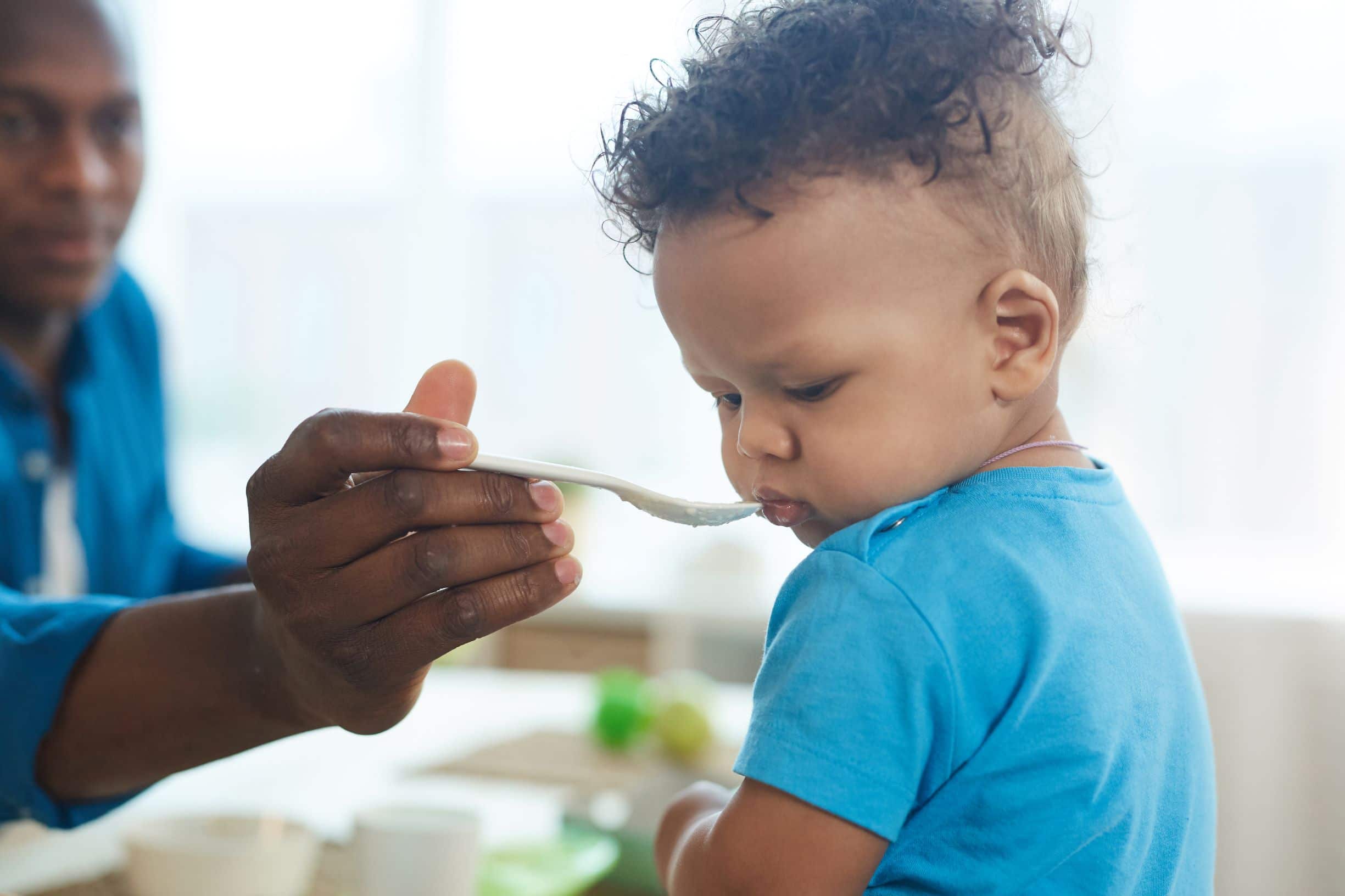sponsored
5 min Read
My Toddler Won’t Eat Meat

December 7, 2023
sponsored
5 min Read

December 7, 2023

If you have a toddler who avoids eating meat, or only tries a few nibbles before spitting it out, this is the article for you. Read on for smart strategies to help your little ones love meat.
Meat is an important food as it is a rich source of protein, abundant in iron—the type that’s easiest for our bodies to absorb—as well as B vitamins, zinc and more. This is why you may want to find supportive ways to help entice your child to be open to more meat in their diet.
Rest assured, as Registered Dietitians and moms, we want you to know a few things, so you don’t feel so alone:
Before we get into the meat of our message (pun intended!), let’s take a step back to deepen our understanding of why this might happen. Around the time your baby transitions to toddlerhood, something called food neophobia may develop. For simplicity’s sake, neophobia when it comes to eating is generally regarded as a reluctance or avoidance of both new and familiar foods. To some degree, this is developmentally appropriate because this is also a time when your toddler wants to assert more independence and autonomy in their daily lives.
Texture as well as teething may be other reasons children avoid meat. Depending on the cut and preparation, meat can be too hard for toddlers to chew. In addition, most toddlers experience pain when their molars erupt, which can make them less enthused to try tough textures.
Now that you’ve got a good understanding about the physiological and developmental workings of your toddler, you can probably better empathize with them, which is a key pillar in responsive feeding. The strategy now is to problem-solve. The goal is to meet your child where they’re at and ever so gently push the envelope of food exposure and acceptance. Not sure where to start? Try one or more of the strategies below.
Strategy #1:
First and foremost, prepare and serve meat. A child cannot try foods they aren’t served. We know that children may require upwards of 15+ exposures before they’ll even try a food. You don’t want to miss a window of opportunity simply because you didn’t serve meat. Plus, if you enjoy nibbling on steak, meatloaf or roast, that’s important too. Research suggests that children will grow up to enjoy the foods they see their parents enjoying.
Strategy #2:
Slice meat into teeny tiny pieces and serve with a dip or sauce. Slicing meat into small pieces that are about the size of your pinky nail can calm your child’s nervous system because they can visually see how small the pieces are. In contrast, serving a 3-ounce steak may feel really overwhelming to a developing eater.
Serving the tiny pieces of meat with a dip or sauce can help make it both tastier and more moist, but most of all, you’ll make trying meat fun because kids love to dip! You can try hummus, ranch, ketchup, curry broth or tzatziki.
Strategy #3:
Employ cooking methods and cuts that ensures meat is soft. Recipes that call for beef blade, shank or cross rib braised in the oven, or cooked in a slow cooker or pressure cooker result in really tender, fall-off-the bone meat that’s yummy and easy to chew. In this beef pot roast recipe, the meat is cooked at low setting for three hours. If cooking a steak, choose one of the more tender cuts, like tenderloin or strip loin, and limit charring if cooking on the barbecue. For a great starter steak, try a beef fast-fry steak; these thin cut steaks are often pounded by the butcher to break up meat fibres before cooking. They are also typically reasonably priced coming from value-cuts like eye of round for example.
Strategy #4:
Add flavour. When infants are just starting on solid foods, the recommendation is to omit salt because their bodies can’t quite handle all that sodium. Now that you’ve got a toddler at the table, you can definitely use a bit of salt along with other spices to add flavour to your meats. Seasonings like thyme, rosemary and paprika go a long way. Just be sure to crush dried herbs or mince fresh herbs well before adding to a recipe. Butter, soy sauce and garlic can also improve the flavour profile. A well-seasoned beef steak or slice of roast beef tastes so much better than plain unseasoned meat. Rule to live by: Season the meat during cooking, not after, for the biggest flavour hit.
Strategy #5:
Serve your baby ground beef in a variety of ways. Ground meats develop a crumbly texture when cooked. So, for a little one with only a few teeth, it’s the perfect beginner meat. It’s also fairly simple to add ingredients that help to soften the overall texture. For example, you can shred apples into meatballs or add in ricotta cheese or minced mushrooms for additional moisture and nutrients. Ground beef can be shaped in a variety of ways, too: You can form it into meatballs or little oblong shapes, you can make a mini burger, or you can cook up a meat loaf and slice it for your toddler.
Taking care in planning balanced meals for your children and family is no easy task. If your child throws you for a loop with their meat refusal, just know that you’re now armed with extra tools to support them through the phase.
References:
Sponsored by: Canada Beef
